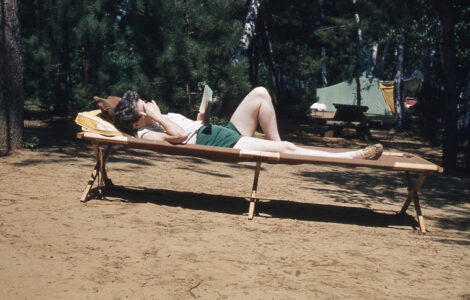Economic impact of rail trails
I write to share my thoughts and conclusions following significant research concerning the economic impacts claimed by those who support removal of the rails between Tupper Lake and Lake Placid to create yet another trail in the Adirondacks.
The state Department of Environmental Conservation, in the preparation of its proposed Alternative 7 to the current unit management plan, has cited and relied on the Economic Impact Study prepared at the direction of the Empire State Development Agency. That work, done by Camoin Associates, used for comparative purposes a handful of carefully chosen trails around the country which are offered as similar to what is envisioned for the proposed 34-mile stretch between Tupper Lake and Lake Placid. There are, in fact, few similarities.
One example is the Virginia Creeper trail in Damascus, Virginia. Damascus is popularly referred to as “Trail Town USA” because it is the intersection of five of the most popular trails in the U.S., including the Appalachian Trail. The town, with a population of 813, is rural and located about 12 miles or so from Exit 17 of Interstate 81. Although many people use the trail, only 4 percent of visitors are “primary purpose overnight visitors,” people who buy rooms and meals, etc. The residents of Damascus gain no economic advantage from the vast majority of trail users.
Another example used is the Sugar River Trail in Wisconsin. It lies about 35 miles from a primary statistical area, meaning population center, of nearly 850,000 people. The other “similar” trails are listed in the various reports, should you care to look. They, too, are in close proximity to major population centers and are enjoyed by local resident users, according to surveys, but they do not attract many primary-purpose overnight visitors.
This type of visitor – people who come to the Adirondacks to see our spectacular scenery, enjoy hiking, biking, paddling opportunities and spend money that support local hotels, restaurants and other points of interest including shopping in local stores – is the backbone of the tourism economy that is so important to the Tri-Lakes region. What has not been reported in media coverage of the issues surrounding the proposal to rip up the rails is this statement by Camoin Associates, authors of the EIS: “As stated above, due to the many trail options that currently exist for non-bike users in the region, CA assumes that these users would likely spend their money in the region regardless of the addition of THIS (emphasis added) new trail.” (Camoin for AdkAction, 2012, pg. 20) Similarly, New York State Parks Recreation and Historic Preservation, in the 2010 survey of trail users, had this to say on page 53: “It would seem that this measure, indicating a high proportion of local users, shows that trails have a limited economic impact on their communities.” It is remarkable that the New York State DEC, in its presentations about the proposal to rip up the rails and create another trail, makes no mention of these studies.
In surveys of eight trails in New York state that actually are similar to the proposed rail trail, it was determined that about 94 percent of the total trail usage was by local residents, that the average drive from “home” to the trailhead was about 12 miles, that the typical user accessed the trail an hour each week, and that fewer than 4 percent were from outside New York state (primary-purpose overnight visitors). A conclusion? The communities near these trails do not benefit from any substantive increases in tourism spending.
Connecting the Tri-Lakes region to Utica and the Amtrak main line with an upgraded rail system supporting passenger services from all over the United States will bring greater numbers of primary purpose overnight visitors. The organization I represent, the Adirondack Railway Preservation Society, submitted concrete plans to New York state as part of the ESD analysis for Alternative 7; this information was not included in the Economic Impact Study. Using Essex County leisure traveler data, our plan would create more than $30 million of new economic activity to communities along and near the Remsen-Lake Placid travel corridor and bring thousands of new primary-purpose overnight visitors..
Ripping up the tracks as proposed will result in roughly 40,000 fewer visitors on the sidewalks of Saranac Lake and Lake Placid in 2017, just with current operations, and I predict this many and more with an improved rail line. You decide. Whose interests are really being promoted anyway? If you are a local resident or a shopkeeper, those interests certainly aren’t yours. I hope you will agree it is time that New York state agencies act to support the statements and goals of Gov. Cuomo and strengthen the tourism economy in the Tri-Lakes by investing in the existing rails as well as in new community trails.
—
Bill Branson is president of the board of the Adirondack Railway Preservation Society, doing business as the Adirondack Scenic Railroad. He lives in Skaneateles.


